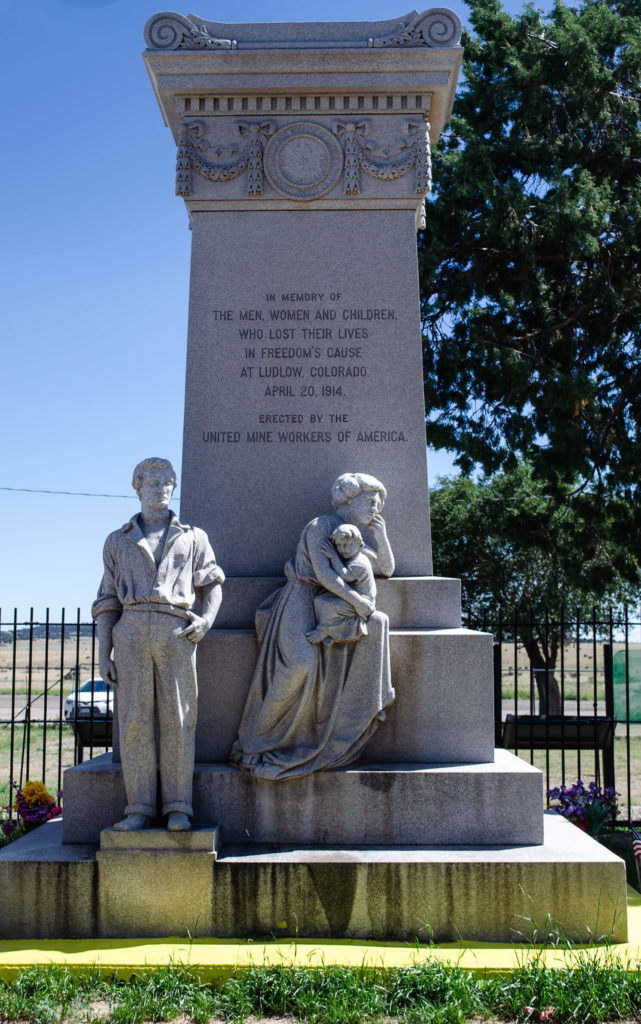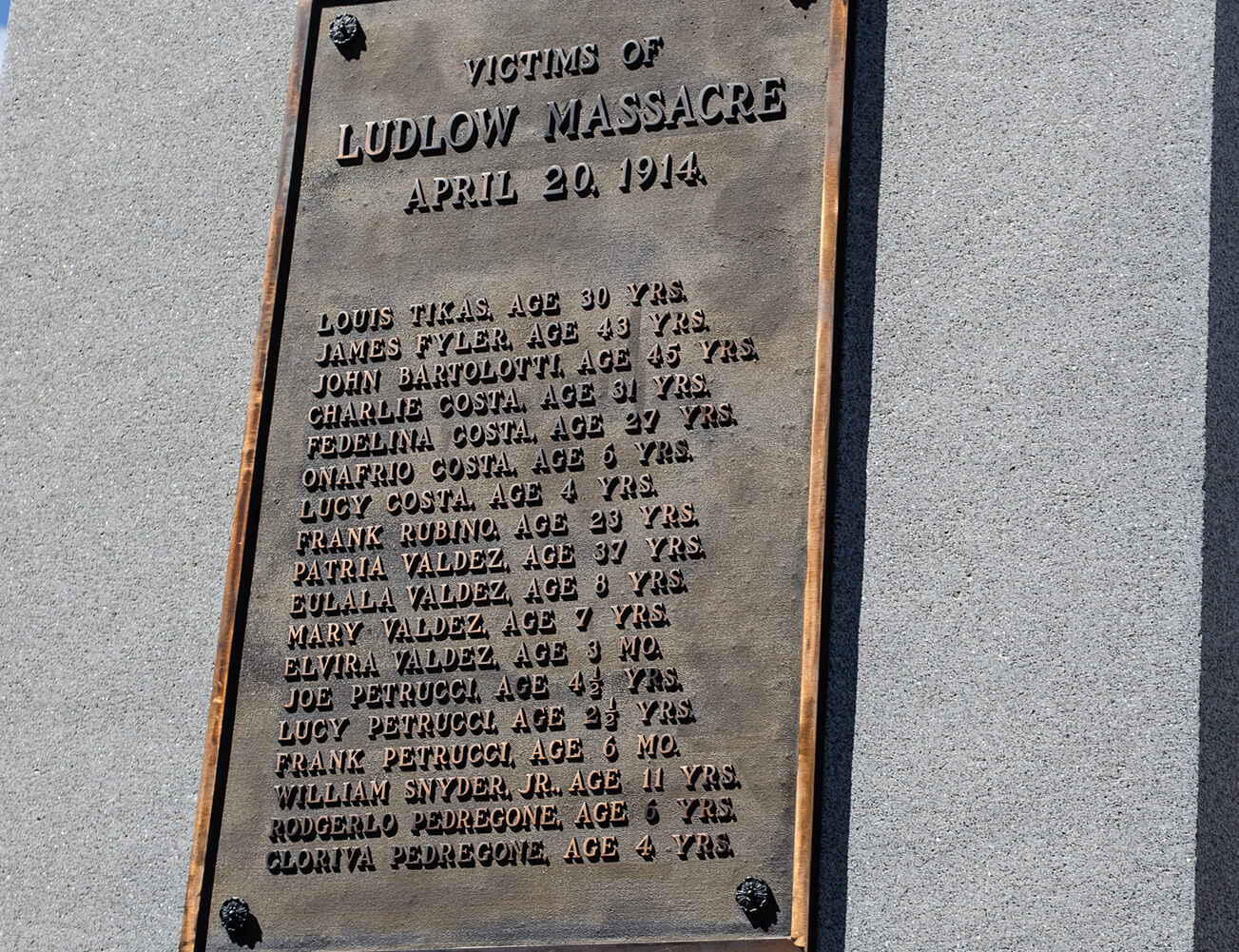Ludlow Massacre

This past week, we celebrated Labor Day and the Labor Day Lift Off, formerly the Balloon Classic in Colorado Springs. It is a long weekend dedicated to the celebration of workers, to remember the fight for workers rights and the Labor Movement during the late 19th and early 20th century.
We must remember the Labor Movement did not just cost workers time in wages or companies in money or loss of production. The Labor Movement and the right to unionize cost workers and their families their lives. The role of state and federal government has to be remembered for how the government should and should not respond to labor disputes.The Ludlow Massacre is an example of the high costs paid for the right to unionize in blood and the questionable decisions of the Governor of the State of Colorado during this labor dispute.
A little background, Ludlow Colorado was a mining town controlled by the Colorado Fuel and Iron Company. The Controlling partner was J. D. Rockefeller, Jr. At this location Colorado Fuel and Iron was mining for coal. Mining for coal was very dangerous work. Despite Colorado having strong laws regulating mine safety, deaths in Colorado mines were extremely high due to lack of enforcement.
Colorado Fuel and Iron Company owned and controlled every aspect of life in these company controlled communities. The company owned the land, workers paid rent to the company for housing, the commissary was also owned by the company. The company set curfews and enforced laws and rules. The prices of goods and services were inflated. The workers were not paid in legal money but in company credits or tokens called scrips.
In 1913-1914 the mine workers wanted to unionize for safer working conditions, reasonable hours and to be paid in real money. The company responded by hiring a strikebreakers to intimidate the workers with force and brutality. When the strikebreakers didn’t work the company hired Baldwin-Felts Detective Agency to protect new workers, people that would cross the strike and to harass the striking workers.
As tensions continued to escalate, the governor of Colorado, Elias M. Ammons, sent in the Colorado National Guard to he;[ defuse the tensions between the striking mine workers and the company. This action did not help to deescalate the situation as company sympathizers permeated the National Guard. The tensions escalated until violence erupted.
No one really knows what led to the violence or the true cause because the tensions were high, but the fallout was devastating. 25 men, women and children were killed with ages ranging from 3 months to 45 years old. The Ludlow Massacre led to the Coalfield War. In the end, the workers were not able to unionize and the fight for workers rights would continue.
You can visit this memorial between Trinidad and Walsenburg about a mile off the interstate.




